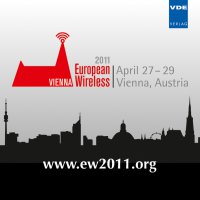On the Autocorrelation Ergodic Properties of Sum-of-Cisoids Rayleigh Fading Channel Simulators
Konferenz: European Wireless 2011 - Sustainable Wireless Technologies
27.04.2011 - 29.04.2011 in Vienna, Austria
Tagungsband: European Wireless 2011
Seiten: 6Sprache: EnglischTyp: PDF
Persönliche VDE-Mitglieder erhalten auf diesen Artikel 10% Rabatt
Autoren:
Gutiérrez, Carlos A.; Meléndez, Anely; Sandoval, Arturo; Rodriguez, Hermes (Panamericana University, Campus Aguascalientes, Josemaría Escrivá de Balaguer No. 101, Aguascalientes 20290, México)
Inhalt:
In this paper, we analyze the autocorrelation properties of seven fundamental classes of stochastic sum-of-cisoids (SOC) simulation models for narrowband mobile Rayleigh fading channels. The purpose of this analysis is to determine which classes of SOC models are autocorrelation ergodic (AE), i. e., for which classes of simulation models the time autocorrelation function (TACF) equals the autocorrelation function (ACF) of the ensemble. This information is of practical relevance, since an AE channel simulator allows to accurately emulate the channel's ACF in a single realization, making it possible to bypass the time-consuming computation of the ensemble average. The obtained results conclusively demonstrate that only the class of SOC models defined by cisoids with constant gains, constant frequencies, and random phases possesses the desired AE property. The findings presented in this paper can be used as guidelines for the design of efficient SOC channel simulators that generate Rayleigh fading waveforms with specified autocorrelation properties in each simulation run.


